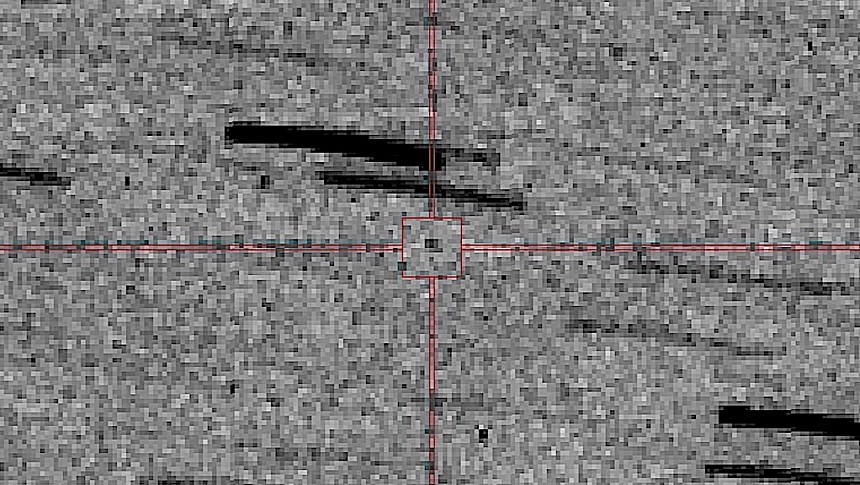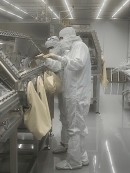This weekend comes with what may very well be the most exciting event in space exploration this year: a spacecraft that departed long ago is coming back home, bringing with it a piece of an alien world.
It's on Sunday, September 24, when NASA expects a capsule of the OSIRIS-REx spaceship to touch down somewhere in the Utah Test and Training Range. It carries inside it no more than 8.8 ounces (250 grams) of alien soil, collected by the spaceship off the surface of an asteroid called Bennu.
OSIRIS-REx (that's short for Origins, Spectral Interpretation, Resource Identification, and Security–Regolith Explorer) is one of the few long-term space missions we've seen conclude in recent years.
It started back in 2016, when the ship departed for its target with the goal of snatching a piece of it and bringing it back here for study. The ship traveled two years to its target, and spent an additional three studying it. It then set course for home, and it is presently approaching fast.
A space image released this week by the European Space Agency shows a black dot lost in a sea of static. We're told that is OSIRIS-REx, and the photo you're looking at now is the first one to show the ship as it approaches our planet.
The photo was captured on September 16, at a time when OSIRIS was 4.66 million km (almost 3 million miles) away from Earth. In fact, you're looking at the result of a combination of 90 images, snapped by the Optical Ground Station (OGS) telescope in Tenerife in 36-second exposures.
The ship is now, obviously, a lot closer than seen here, so we'll probably get more images of it as the countdown to its arrival moves forward.
If everything goes according to plan, the mission will open up new avenues of research in space exploration. Bennu is a piece of rock approximately 4.5 billion years old, making it a remnant of the early days of our solar system.
This makes it the ideal case study for those looking for answers to pressing questions like how organic material was transported to our planet and eventually turned into life.
Once on the ground, the asteroid sample will be handled by NASA and eventually distributed to hundreds of scientists around the world. It's unclear when we'll see the first results, but they'll probably be something to remember.
As for the ship that brings the asteroid home, OSIRIS-REx will drop the capsule and the head back out, this time in search of asteroid Apophis. Once it does that, it'll suffer a name change to OSIRIS-APEX.
For now, however, we'll leave you with ESA's message to the world on the eve of the asteroid's arrival: "Hello, OSIRIS-REx, good luck NASA and welcome safely to Earth, asteroid Bennu!"
OSIRIS-REx (that's short for Origins, Spectral Interpretation, Resource Identification, and Security–Regolith Explorer) is one of the few long-term space missions we've seen conclude in recent years.
It started back in 2016, when the ship departed for its target with the goal of snatching a piece of it and bringing it back here for study. The ship traveled two years to its target, and spent an additional three studying it. It then set course for home, and it is presently approaching fast.
A space image released this week by the European Space Agency shows a black dot lost in a sea of static. We're told that is OSIRIS-REx, and the photo you're looking at now is the first one to show the ship as it approaches our planet.
The photo was captured on September 16, at a time when OSIRIS was 4.66 million km (almost 3 million miles) away from Earth. In fact, you're looking at the result of a combination of 90 images, snapped by the Optical Ground Station (OGS) telescope in Tenerife in 36-second exposures.
The ship is now, obviously, a lot closer than seen here, so we'll probably get more images of it as the countdown to its arrival moves forward.
If everything goes according to plan, the mission will open up new avenues of research in space exploration. Bennu is a piece of rock approximately 4.5 billion years old, making it a remnant of the early days of our solar system.
This makes it the ideal case study for those looking for answers to pressing questions like how organic material was transported to our planet and eventually turned into life.
Once on the ground, the asteroid sample will be handled by NASA and eventually distributed to hundreds of scientists around the world. It's unclear when we'll see the first results, but they'll probably be something to remember.
As for the ship that brings the asteroid home, OSIRIS-REx will drop the capsule and the head back out, this time in search of asteroid Apophis. Once it does that, it'll suffer a name change to OSIRIS-APEX.
For now, however, we'll leave you with ESA's message to the world on the eve of the asteroid's arrival: "Hello, OSIRIS-REx, good luck NASA and welcome safely to Earth, asteroid Bennu!"









